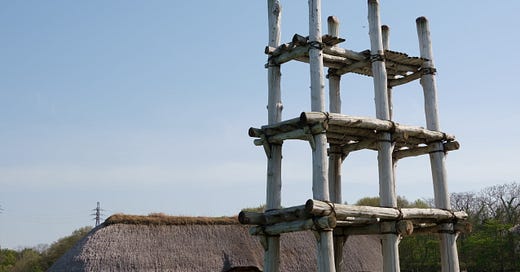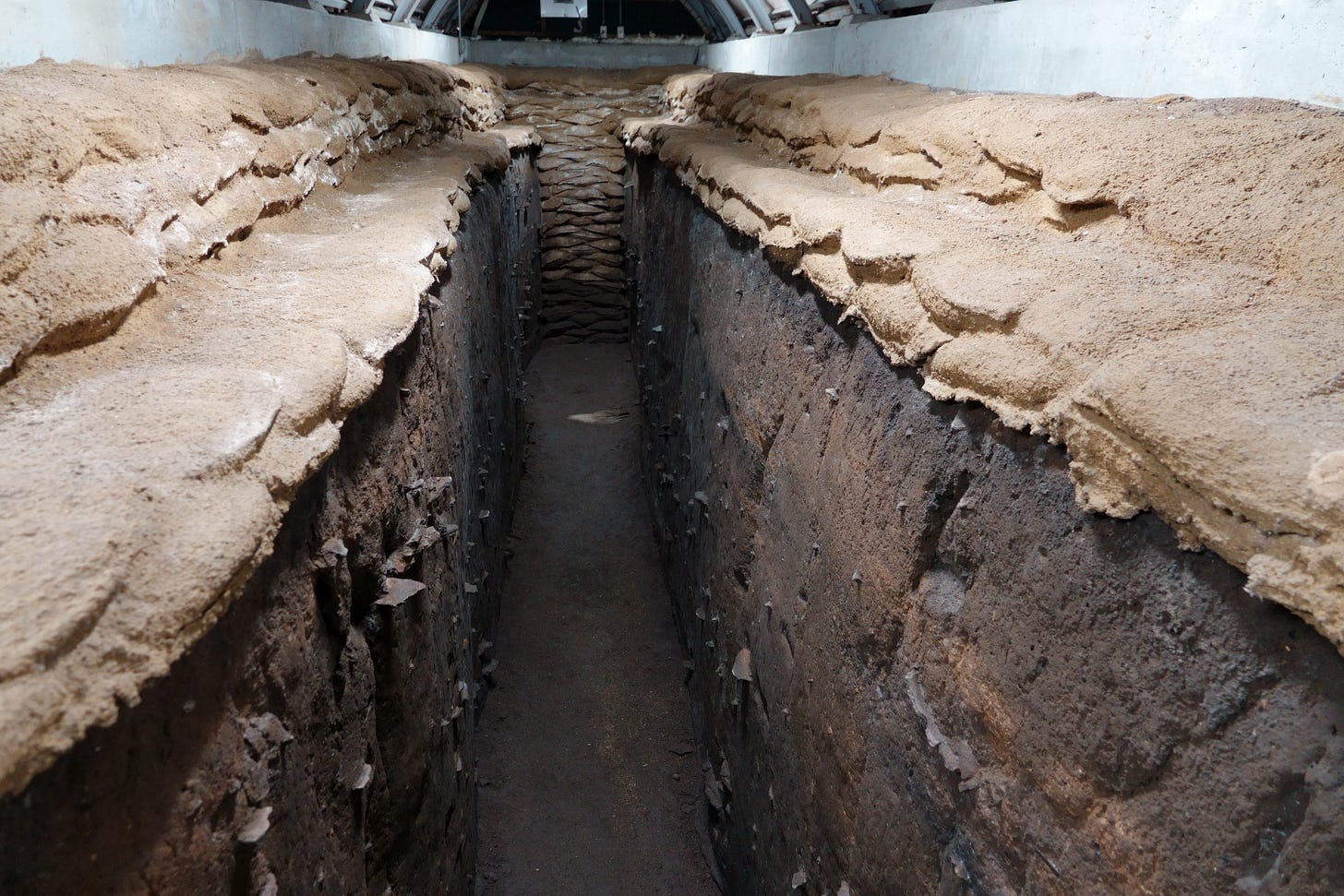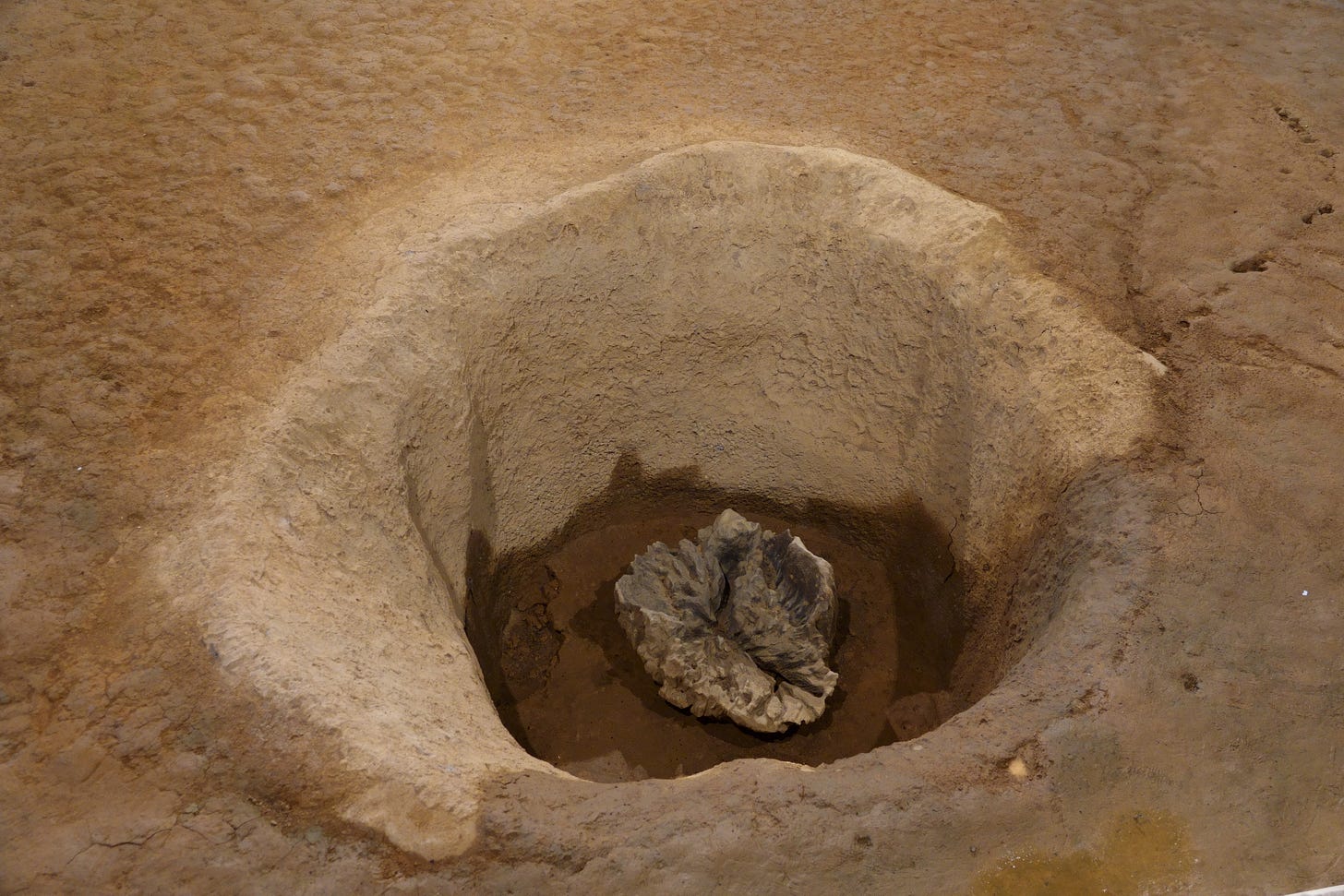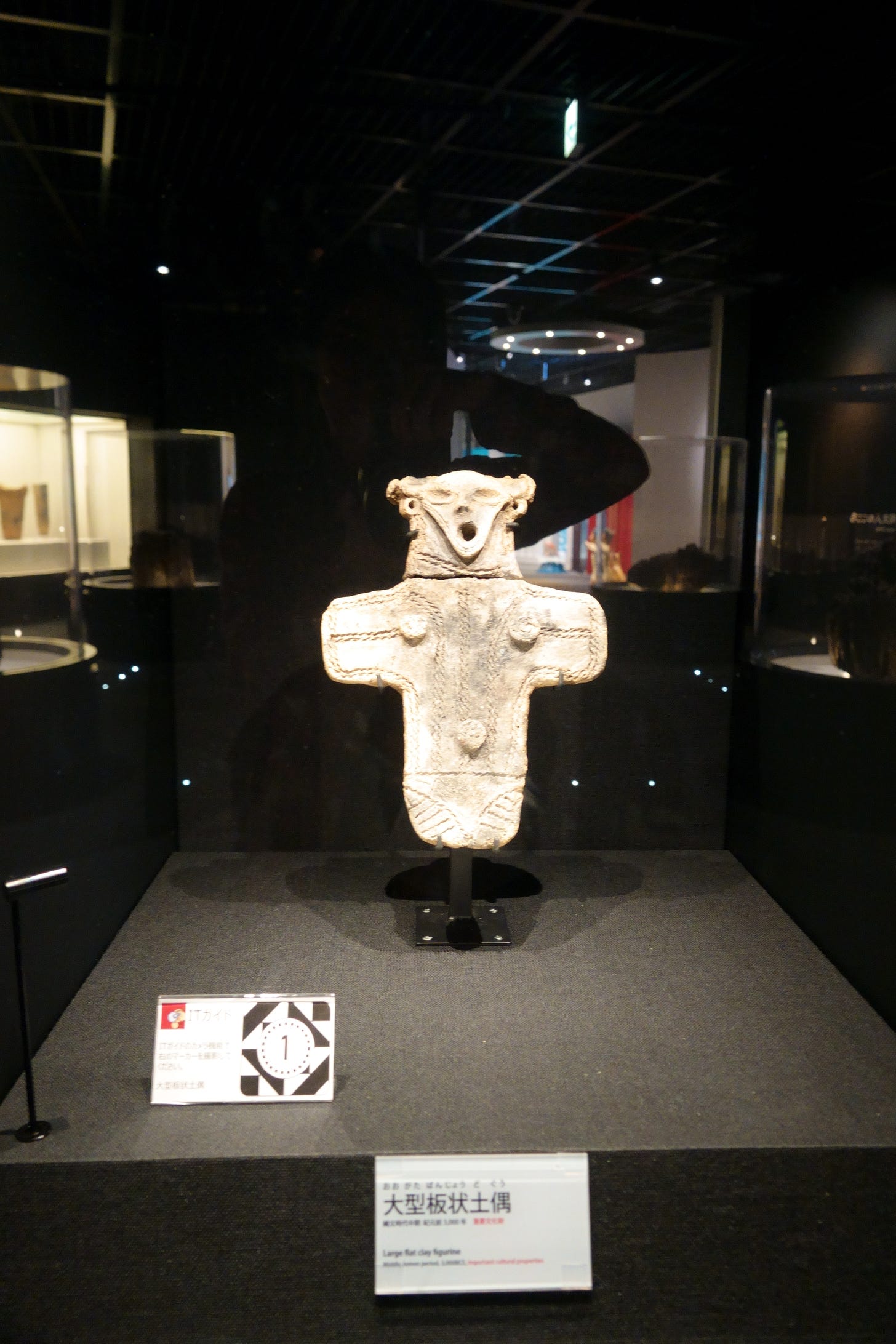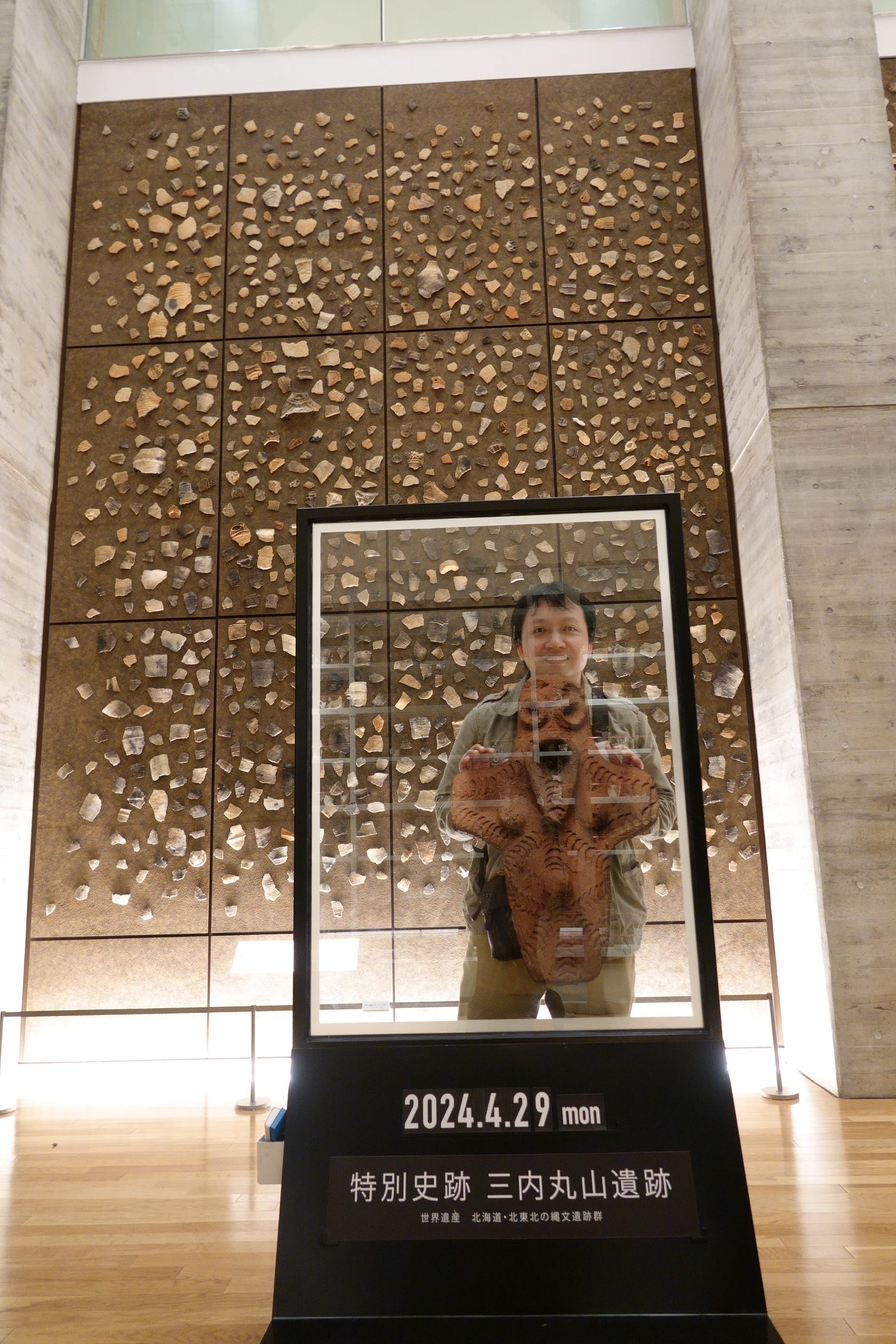Cherry Blossoms and Sannai Maruyama Historical Site in Japan (Part II)
Travel through time to visit Sannai Maruyama in 3000 BC
Continuing from the previous post, Part II introduces the Sannai Maruyama site, located in Aomori Prefecture, northeastern Japan. Let’s explore this remarkable hunter-gatherer society.
《翻譯鳥事一籮筐》是中英文雙語電子報。如果只想收到中文版,請到網站右上角的「My Account」內進行操作。有任何問題都歡迎來信聯絡,請直接回覆這封 E-mail 或寫信到 transcreation@substack.com。再次感謝你的訂閱支持!
這篇文章的中文版在這裡。
As mentioned in Part I, The Dawn of Everything shows us that there is nothing primitive or simple about hunter-gatherer societies. Let’s visit the Sannai Maruyama site to witness the vibrant life of the Jomon people in those times.
Sannai Maruyama Historical Site
Sannai Maruyama, the largest and most impressive Jōmon site, was occupied between 3900 and 2300 BC, and lies in the Aomori Prefecture in northern Japan… It’s worth noting that the ancient Jōmon have been infiltrating modern consciousness in other ways too: the distinctive ‘rope pattern’ aesthetics of their highly crafted ceramics provided the graphic template for one of Nintendo’s most popular video games, The Legend of Zelda: Breath of the Wild. Jōmon seems quite at home in the digital age. (p. 549)
The Legend of Zelda? A video game might seem a bit out of place in the introduction to Sannai Maruyama. However, after I visited the site, it completely makes sense to me.
The Sannai Maruyama site is very close to Shin-Aomori Station, with shuttle buses departing from Shin-Aomori Station and Aomori Station on holidays. In addition to the Sannai Maruyama site, the bus also stops at another major tourist attraction: the Aomori Museum of Art. We departed from Shin-Aomori Station, and the bus was filled with passengers. Everyone had only half a day left to tour around and had to choose between the site and the art museum. Much to our surprise, most people chose the site, just as we did.
I originally thought this was a lesser-known attraction, but in fact, the entire site felt like a large park, with many people visiting with their families or friends. We toured the reconstructed models of buildings and also saw some actual archaeological strata (protected by roofs to regulate temperature and humidity), which we found interesting, even though we can’t claim to fully understand them.
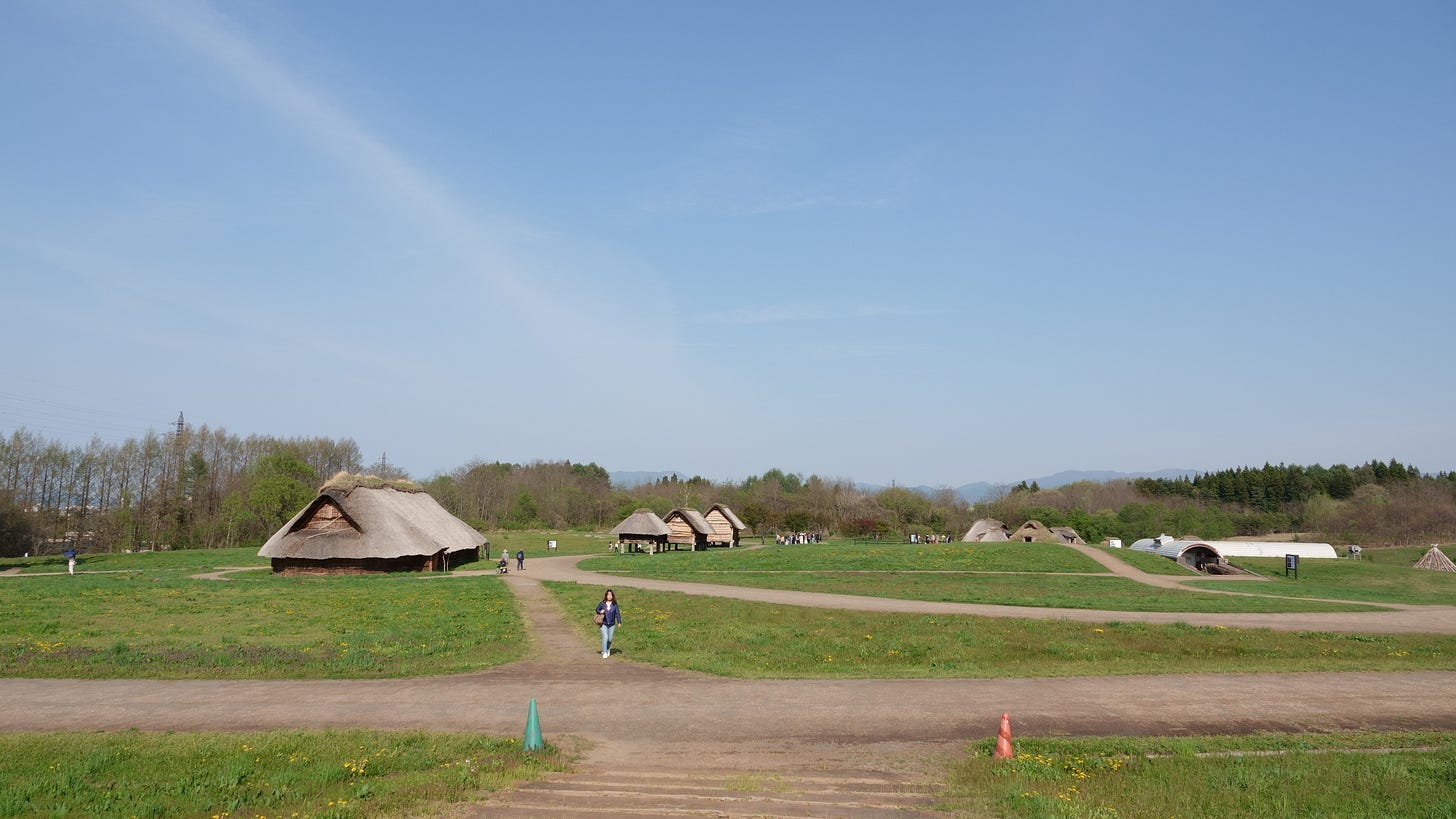
The most famous structures at the Sannai Maruyama site are the large pit-dwelling and the large pillar-supported building shown in the photo below (also mentioned in Part I). The pillar-supported building is believed to have served religious purposes, and this massive structure has been reconstructed based on the remains of the pillar holes. Archaeologists are truly amazing detectives. (After The Dawn of Everything, I happened to translate another fascinating book on archaeology, which will be published soon. I look forward to sharing that book with you as well!)
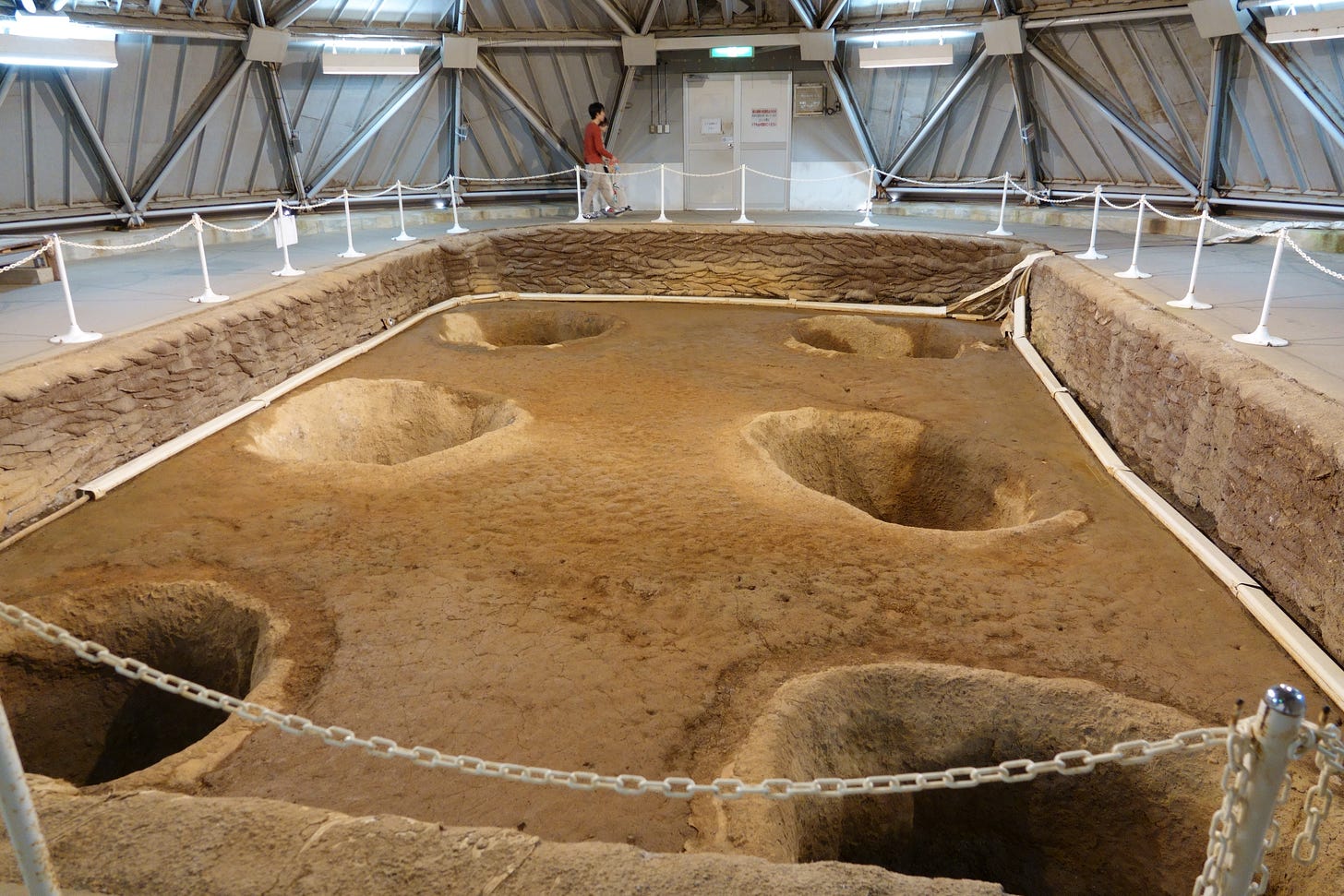
Archaeologists rely on tiny clues left by ancient people to reconstruct their lives, but it’s difficult for ordinary visitors to imagine ancient life just by looking at the remains. The Sannai Maruyama site not only restored buildings but also created numerous models depicting the daily life of the Jomon people to help visitors understand their culture. There are even workshops for making clay figurines, jade ornaments, and more, allowing everyone to experience Jomon culture firsthand. Creating models and restoring buildings is probably the most effective way to turn archaeological sites into museums.1
As we entered the indoor exhibits, we were fascinated not only by the various models but also by the excavated artifacts. Surrounded by mountains and sea (the coastline at that time was further south than today), the Jomon people at Sannai Maruyama were able to utilize abundant forest products and fishery resources. They engaged in foraging, fishing, hunting, pottery making, weaving, and more, creating a rich cultural and economic life.2 Arrowheads used for hunting were made from various special materials not produced locally, indicating a wide scope of exchange among the Jomon people. The strange yet charming shapes of the clay figurines are likely one of the reasons why Jomon culture is so beloved.
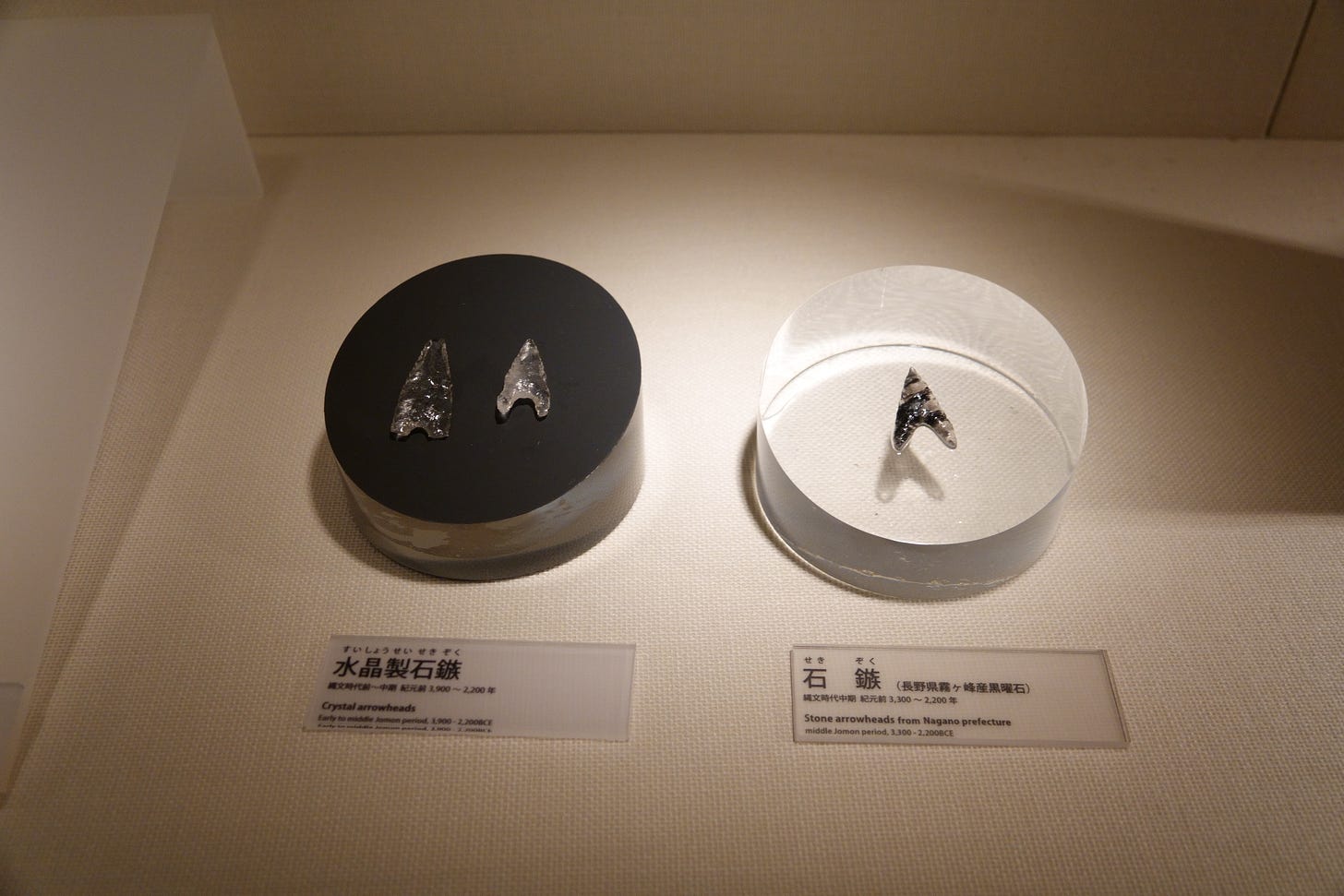
At the end of the visit, there were, of course, several photo spots. I joined the other happy visitors, put on Jomon clothes, and became a Jomon for a day. On our way from Aomori to Sendai, we saw tourism promotions at the stations wherever there were Jomon sites nearby, and there was even a “Jomon Spring Festival” event in Sendai. It’s clear that people really love the Jomon culture and find it both fascinating and familiar. No wonder these elements made their way into The Legend of Zelda.
Visiting the Sannai Maruyama site after translating The Dawn of Everything allows me to appreciate the site in a more profound way. My friend teased me that my translation fee was just a bonus, and that the real payment was the in-depth guide. It seems that I should thank this translation task for sponsoring my cherry blossom viewing trip along with in-depth guides along the way. If you plan to visit the northeastern Japan, consider including some Jomon sites in the trip. Maybe next time I will go to the Kamegaoka Site to see the famous goggle-eyed clay figurine!

References
nippon.com, “Step into Japan’s Prehistoric Jōmon Culture at Aomori’s Sannai Maruyama Archeological Site”: https://www.nippon.com/en/guide-to-japan/gu900227/
Jomon Prehistoric Sites in Northern Japan: https://jomon-japan.jp/en/
The official Site of the Sannai Maruyama: https://sannaimaruyama.pref.aomori.jp/english/
In fact, this seems to be a trend in museums today. The Shihsanhang Museum of Archaeology in New Taipei and the National Museum of Taiwan History in Tainan are also impressive. Both have excellent restored model displays and are definitely worth a visit.
It is true that the Jomon people didn’t farm, but farming is simply one of many economic activities to choose from and has nothing to do with being “advanced” or “progressive.” In The Dawn of Everything, the authors make a significant effort to clarify this point.

